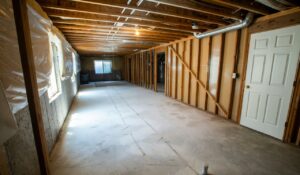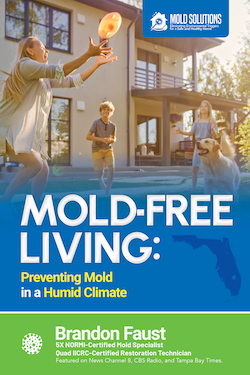Whether you just bought your first house or are still renting one, you’ll want to know where mold is most commonly found so that you can take action to prevent it.
If after moving into your new home you start to notice some of the physical symptoms and situations that mold can cause, here is where to look first.
You can also simply call a mold remediation company, many of which offer free inspections.
Mold is a common issue in homes, and it tends to grow in areas where there is moisture, warmth, and poor ventilation.
Here are 10 of the most common areas in Tampa Bay homes where we often find mold:
HVAC Systems
Air conditioning units and HVAC systems can harbor mold if there is moisture buildup and the system isn’t cleaned regularly. Regular maintenance and changing filters are important to prevent mold from dispersing through the air system. UV Lights should also be installed in most Florida home HVAC systems. We’ve seen great results and changes for homeowners and their families from just tackling this one source of mold. It’s common, and creates problems for many homeowners here.
Crawl Spaces
These areas can be susceptible to mold because they are often neglected, poorly ventilated, and can become damp from ground moisture. Ensuring proper ventilation, installing a vapor barrier on the ground, and keeping the crawl space dry are effective ways to prevent mold growth in these spaces.
Behind Wallpaper
Mold can grow behind wallpaper, especially if the glue contains organic materials that mold can feed on, or if the walls behind the wallpaper have suffered water damage or have high humidity levels. To prevent mold growth behind wallpaper, it’s important to ensure walls are dry before application and to address any water damage promptly.
Bathrooms
Bathrooms are prime spots for mold growth due to the high humidity levels from showers and baths. Poor ventilation can exacerbate the issue, allowing moisture to linger on walls, ceilings, and grout lines. Preventing mold in bathrooms involves using exhaust fans, opening windows when possible, and regularly cleaning surfaces to prevent mold spores from taking hold.
Kitchens
Similar to bathrooms, kitchens have a lot of moisture from cooking and washing dishes. Mold can often be found under sinks where leaks go unnoticed, around windows, and on refrigerator seals. To prevent mold, ensure good ventilation, fix leaks promptly, and keep surfaces clean and dry.
Attics
Improperly ventilated or insulated attics can trap moisture, leading to mold growth. It’s often found on the underside of the roof or on insulation. Good ventilation, proper insulation, and preventing roof leaks are key to preventing mold in attics.
Windows
Window frames and sills can accumulate moisture from condensation, making them a common mold site. Ensuring windows are properly sealed and reducing indoor humidity can help prevent mold growth.
Laundry Rooms
Washers and dryers can produce a lot of humidity, and if the room isn’t well-ventilated, mold can grow on walls and ceilings. Using exhaust fans and keeping the area dry are effective prevention strategies.
Carpets and Upholstery
Spills, leaks, or flooding can soak into carpets and furniture, which then becomes a breeding ground for mold if not dried quickly. Using a dehumidifier and cleaning spills immediately can help prevent mold.
Basements
Few Florida homes have basements, but those that do have them tend to be poorly ventilated and can be prone to dampness and water intrusion, either from the outside or from condensation. Mold can grow on organic materials like wood, cardboard, and wallboard. Using a dehumidifier, sealing external leaks, and ensuring proper drainage can help prevent it.
By addressing moisture issues, ensuring good ventilation, and performing regular maintenance and cleaning, you can significantly reduce the risk of mold growth in these common areas of your home.










